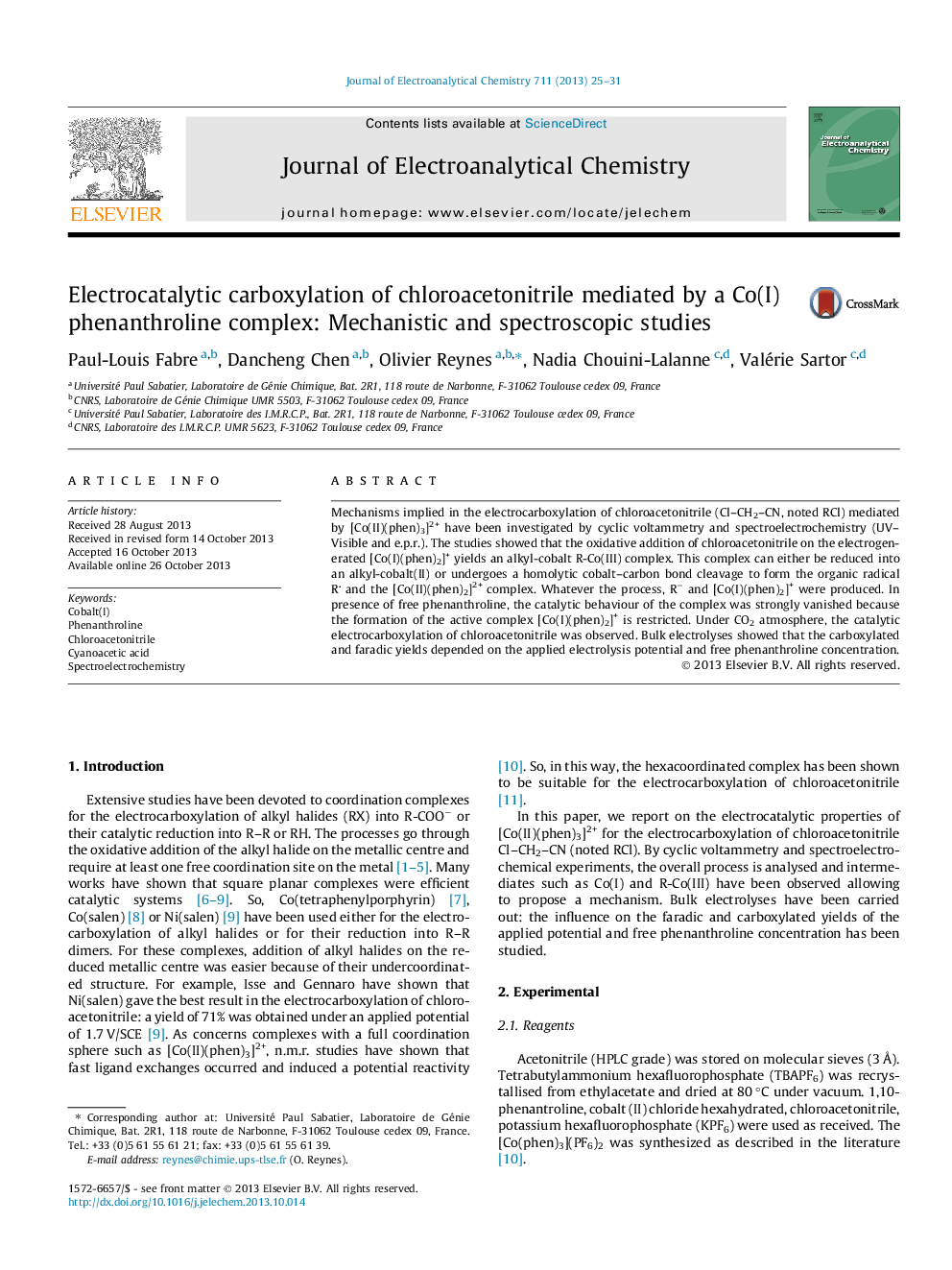| Article ID | Journal | Published Year | Pages | File Type |
|---|---|---|---|---|
| 218959 | Journal of Electroanalytical Chemistry | 2013 | 7 Pages |
Mechanisms implied in the electrocarboxylation of chloroacetonitrile (Cl–CH2–CN, noted RCl) mediated by [Co(II)(phen)3]2+ have been investigated by cyclic voltammetry and spectroelectrochemistry (UV–Visible and e.p.r.). The studies showed that the oxidative addition of chloroacetonitrile on the electrogenerated [Co(I)(phen)2]+ yields an alkyl-cobalt R-Co(III) complex. This complex can either be reduced into an alkyl-cobalt(II) or undergoes a homolytic cobalt–carbon bond cleavage to form the organic radical R and the [Co(II)(phen)2]2+ complex. Whatever the process, R− and [Co(I)(phen)2]+ were produced. In presence of free phenanthroline, the catalytic behaviour of the complex was strongly vanished because the formation of the active complex [Co(I)(phen)2]+ is restricted. Under CO2 atmosphere, the catalytic electrocarboxylation of chloroacetonitrile was observed. Bulk electrolyses showed that the carboxylated and faradic yields depended on the applied electrolysis potential and free phenanthroline concentration.
